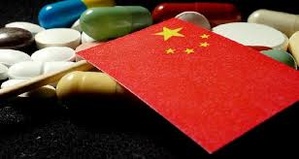China’s pharmaceutical sector is undergoing a noticeable transformation in its procurement strategies, with drugmakers and research institutions increasingly sourcing laboratory reagents from domestic suppliers rather than established international brands. This shift is being driven by a mix of economic pressures, regulatory uncertainties, and a growing emphasis on self-reliance in critical scientific inputs.
Industry insiders say the move is not a short-term reaction but part of a longer-term rebalancing aimed at ensuring stability in supply chains, reducing costs, and shortening delivery times in an environment where global trade dynamics remain unpredictable.
Rising Costs and Trade Tensions Fuel the Transition
For years, international giants dominated China’s reagent market, supplying high-quality products used in research, diagnostic testing, and quality control. These imported reagents — essential for both pre-clinical and clinical research — were valued for their consistency and reliability. However, growing geopolitical tensions and changing tariff policies have disrupted the status quo.
The escalation of trade measures between China and the United States in recent years has introduced significant cost volatility. Higher tariffs on imported scientific goods inflated procurement expenses, forcing companies to reconsider the economics of relying heavily on overseas suppliers. While some of these duties have since been reduced, the uncertainty surrounding future policy has left pharmaceutical firms wary of depending on imports that could become prohibitively expensive without warning.
Domestic suppliers have capitalized on this moment, positioning themselves as stable and cost-effective alternatives. By eliminating the need for international shipping, customs clearance, and additional taxes, they can offer faster turnaround times at competitive prices — a critical advantage in the time-sensitive world of pharmaceutical R&D.
Government Policy and Industrial Strategy Drive Localization
China’s broader industrial policy has played a major role in this procurement pivot. The government has long identified biotechnology and pharmaceuticals as priority sectors for development, offering incentives to domestic firms to upgrade their manufacturing capabilities and expand production capacity. This policy push aligns with the national objective of enhancing self-sufficiency in high-value technologies and reducing dependence on foreign suppliers for critical inputs.
The localization drive is not just about cost savings — it is also about building technological resilience. Local suppliers such as Shanghai Titan Scientific, Nanjing Vazyme Biotech, and Shanghai Aladdin Biochemical Technology have significantly improved their product portfolios, offering reagents that can now meet the stringent requirements of pharmaceutical research. This has given Chinese drugmakers greater confidence in shifting away from established Western brands.
Analysts suggest that the market for laboratory and diagnostic reagents in China will continue to expand at double-digit growth rates over the next five years. This growth will be fueled by rising R&D investments, the expansion of in-vitro diagnostic testing, and an ongoing wave of biotech innovation supported by state-backed funding.
Industry Benefits and Emerging Challenges
The benefits of this shift are clear for domestic suppliers. Major Chinese reagent producers have reported surging demand and robust revenue growth, with stock prices reflecting investor optimism. Increased domestic orders allow these companies to scale up production, invest in new technologies, and capture a larger share of the growing pharmaceutical research market.
For Chinese drugmakers, working with local suppliers also means better flexibility in procurement. Shorter supply chains allow for faster restocking and lower inventory costs, reducing the risk of project delays caused by shipment issues or customs bottlenecks. In an industry where speed to market can be critical, these efficiencies provide a tangible competitive edge.
However, the transition is not without obstacles. Many imported reagents are deeply embedded in research workflows, and switching suppliers can be technically complex. Regulatory requirements demand strict consistency in material quality, meaning any change in reagents during a drug development project can trigger lengthy revalidation processes. This creates hesitation among some firms that fear delays in product approval timelines.
Additionally, while domestic suppliers have improved their capabilities, there remain gaps in certain high-end reagent categories, particularly those involving proprietary technologies or protected manufacturing processes. In some cases, specialized production equipment is unavailable domestically, further complicating efforts to achieve full self-reliance.
Competitive Response from Global Players
The shift toward local sourcing has not gone unnoticed by multinational suppliers. Several international firms are adapting by localizing their production in China to remain competitive. Investments in new manufacturing facilities and regional supply hubs aim to reduce delivery times and align with China’s self-sufficiency goals while retaining a foothold in the lucrative market.
Industry observers believe this evolving competition could ultimately benefit China’s pharmaceutical ecosystem by driving innovation and expanding product options. For domestic firms, it presents both a challenge and an opportunity: they must continue to innovate and maintain cost advantages to secure their growing market share.
The decision by Chinese pharmaceutical firms to turn to local reagent suppliers is more than a procurement adjustment — it is part of a strategic reorientation toward greater supply chain control, cost efficiency, and national resilience in science and technology.
While international suppliers will remain important players, particularly for specialized products, the momentum behind domestic sourcing is unlikely to reverse. As local manufacturers continue to enhance their technical capabilities, and as government policies reinforce the localization trend, China’s pharmaceutical industry could enter a new era where homegrown suppliers play a central role in powering medical innovation.
This transformation underscores a broader lesson emerging from recent global disruptions: in an interconnected but uncertain world, the security of critical inputs can be as important as their quality. For China’s drugmakers, investing in local partnerships is a way to secure both.
(Source:www.usnews.com)
Industry insiders say the move is not a short-term reaction but part of a longer-term rebalancing aimed at ensuring stability in supply chains, reducing costs, and shortening delivery times in an environment where global trade dynamics remain unpredictable.
Rising Costs and Trade Tensions Fuel the Transition
For years, international giants dominated China’s reagent market, supplying high-quality products used in research, diagnostic testing, and quality control. These imported reagents — essential for both pre-clinical and clinical research — were valued for their consistency and reliability. However, growing geopolitical tensions and changing tariff policies have disrupted the status quo.
The escalation of trade measures between China and the United States in recent years has introduced significant cost volatility. Higher tariffs on imported scientific goods inflated procurement expenses, forcing companies to reconsider the economics of relying heavily on overseas suppliers. While some of these duties have since been reduced, the uncertainty surrounding future policy has left pharmaceutical firms wary of depending on imports that could become prohibitively expensive without warning.
Domestic suppliers have capitalized on this moment, positioning themselves as stable and cost-effective alternatives. By eliminating the need for international shipping, customs clearance, and additional taxes, they can offer faster turnaround times at competitive prices — a critical advantage in the time-sensitive world of pharmaceutical R&D.
Government Policy and Industrial Strategy Drive Localization
China’s broader industrial policy has played a major role in this procurement pivot. The government has long identified biotechnology and pharmaceuticals as priority sectors for development, offering incentives to domestic firms to upgrade their manufacturing capabilities and expand production capacity. This policy push aligns with the national objective of enhancing self-sufficiency in high-value technologies and reducing dependence on foreign suppliers for critical inputs.
The localization drive is not just about cost savings — it is also about building technological resilience. Local suppliers such as Shanghai Titan Scientific, Nanjing Vazyme Biotech, and Shanghai Aladdin Biochemical Technology have significantly improved their product portfolios, offering reagents that can now meet the stringent requirements of pharmaceutical research. This has given Chinese drugmakers greater confidence in shifting away from established Western brands.
Analysts suggest that the market for laboratory and diagnostic reagents in China will continue to expand at double-digit growth rates over the next five years. This growth will be fueled by rising R&D investments, the expansion of in-vitro diagnostic testing, and an ongoing wave of biotech innovation supported by state-backed funding.
Industry Benefits and Emerging Challenges
The benefits of this shift are clear for domestic suppliers. Major Chinese reagent producers have reported surging demand and robust revenue growth, with stock prices reflecting investor optimism. Increased domestic orders allow these companies to scale up production, invest in new technologies, and capture a larger share of the growing pharmaceutical research market.
For Chinese drugmakers, working with local suppliers also means better flexibility in procurement. Shorter supply chains allow for faster restocking and lower inventory costs, reducing the risk of project delays caused by shipment issues or customs bottlenecks. In an industry where speed to market can be critical, these efficiencies provide a tangible competitive edge.
However, the transition is not without obstacles. Many imported reagents are deeply embedded in research workflows, and switching suppliers can be technically complex. Regulatory requirements demand strict consistency in material quality, meaning any change in reagents during a drug development project can trigger lengthy revalidation processes. This creates hesitation among some firms that fear delays in product approval timelines.
Additionally, while domestic suppliers have improved their capabilities, there remain gaps in certain high-end reagent categories, particularly those involving proprietary technologies or protected manufacturing processes. In some cases, specialized production equipment is unavailable domestically, further complicating efforts to achieve full self-reliance.
Competitive Response from Global Players
The shift toward local sourcing has not gone unnoticed by multinational suppliers. Several international firms are adapting by localizing their production in China to remain competitive. Investments in new manufacturing facilities and regional supply hubs aim to reduce delivery times and align with China’s self-sufficiency goals while retaining a foothold in the lucrative market.
Industry observers believe this evolving competition could ultimately benefit China’s pharmaceutical ecosystem by driving innovation and expanding product options. For domestic firms, it presents both a challenge and an opportunity: they must continue to innovate and maintain cost advantages to secure their growing market share.
The decision by Chinese pharmaceutical firms to turn to local reagent suppliers is more than a procurement adjustment — it is part of a strategic reorientation toward greater supply chain control, cost efficiency, and national resilience in science and technology.
While international suppliers will remain important players, particularly for specialized products, the momentum behind domestic sourcing is unlikely to reverse. As local manufacturers continue to enhance their technical capabilities, and as government policies reinforce the localization trend, China’s pharmaceutical industry could enter a new era where homegrown suppliers play a central role in powering medical innovation.
This transformation underscores a broader lesson emerging from recent global disruptions: in an interconnected but uncertain world, the security of critical inputs can be as important as their quality. For China’s drugmakers, investing in local partnerships is a way to secure both.
(Source:www.usnews.com)






